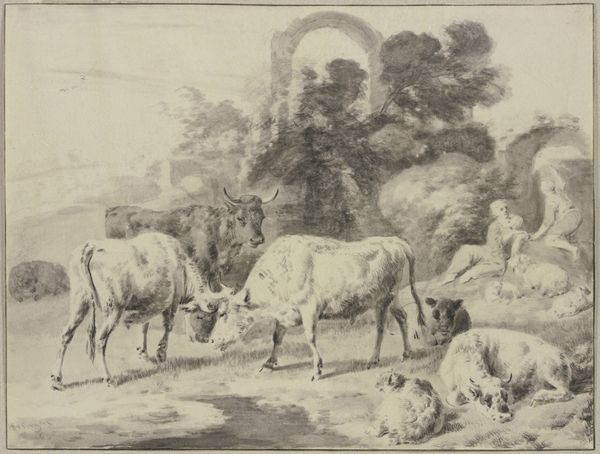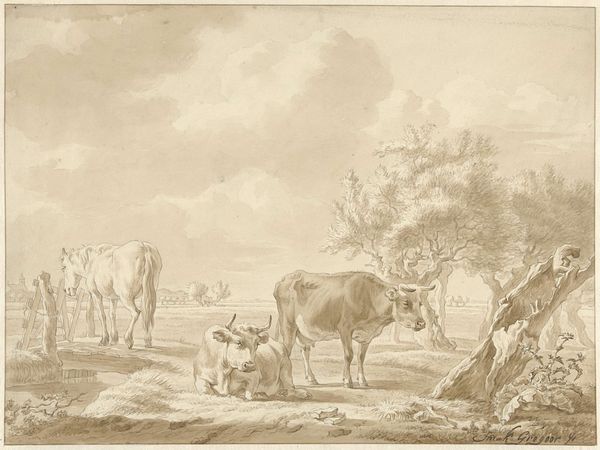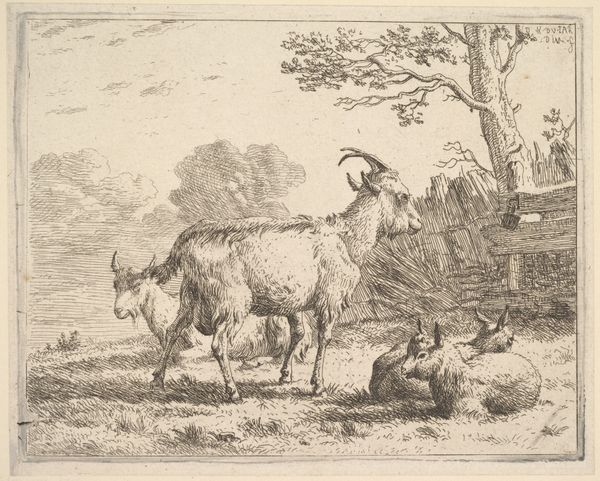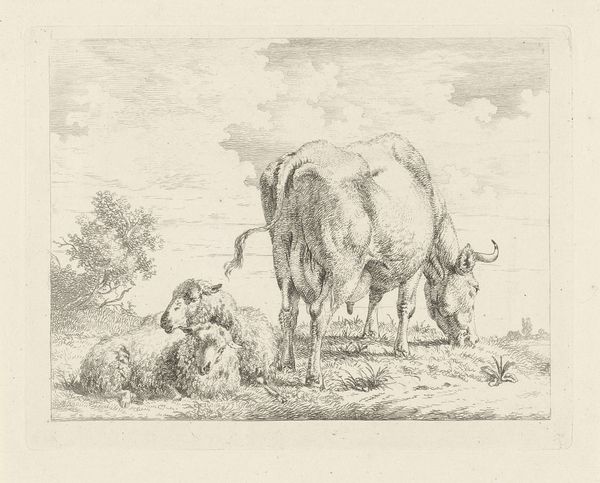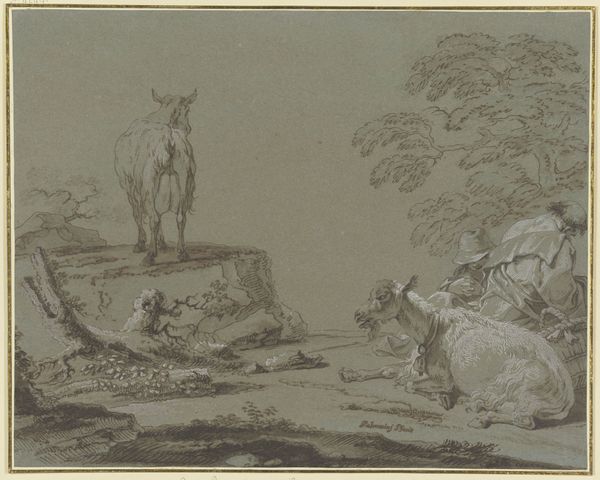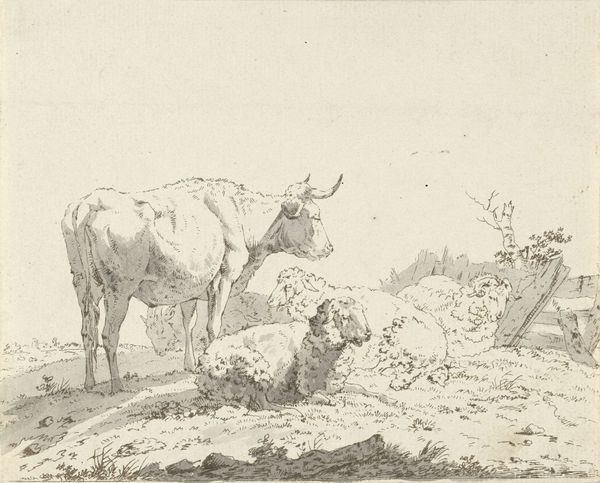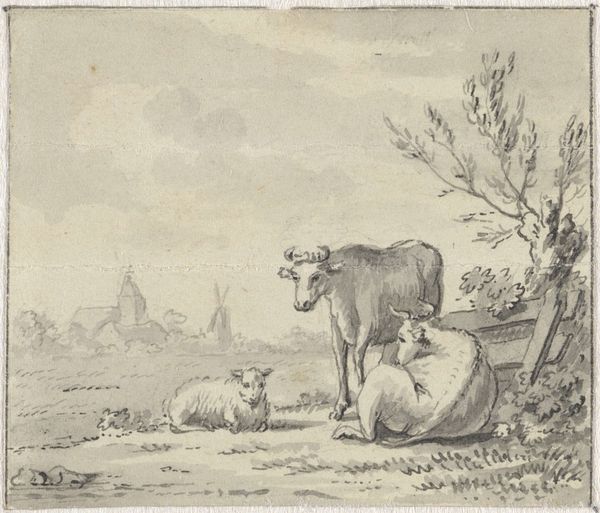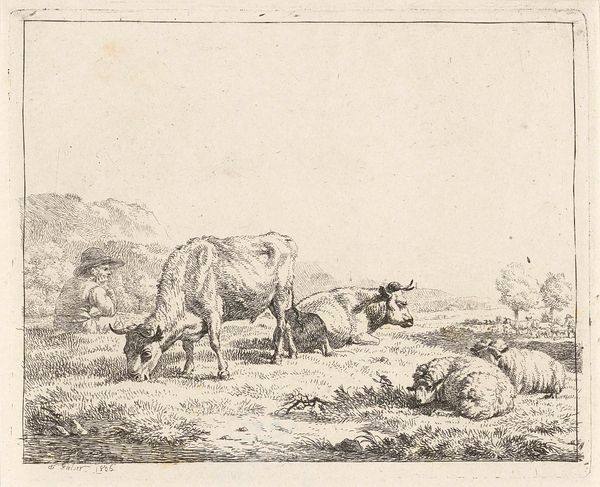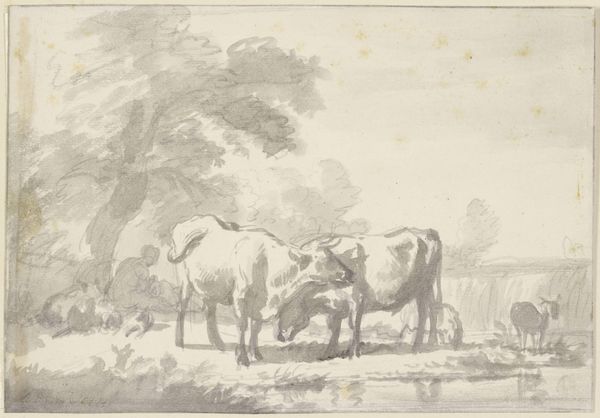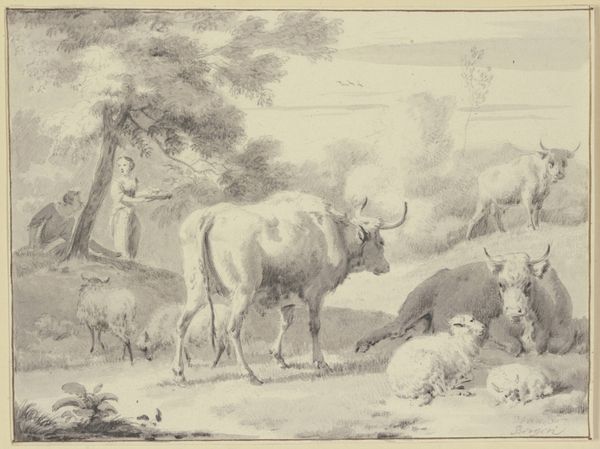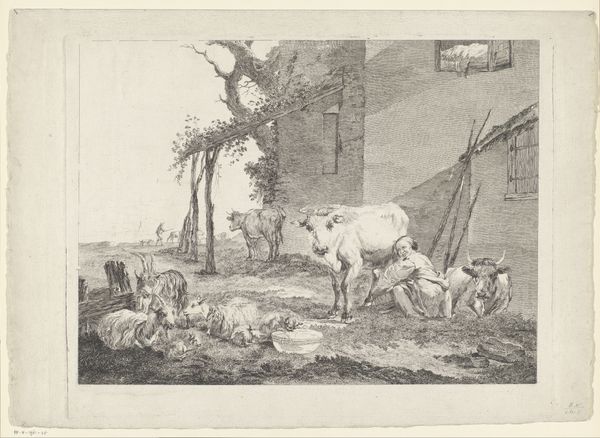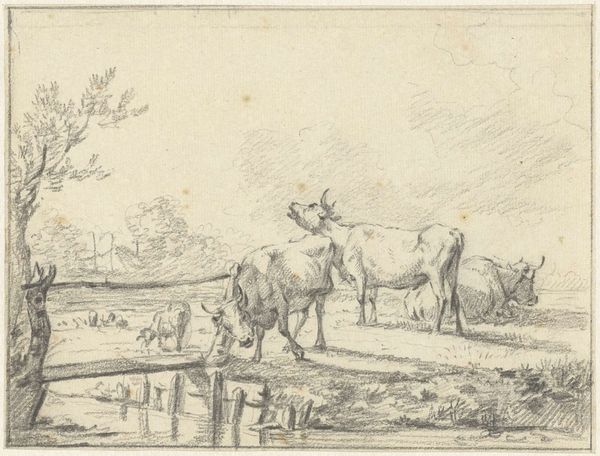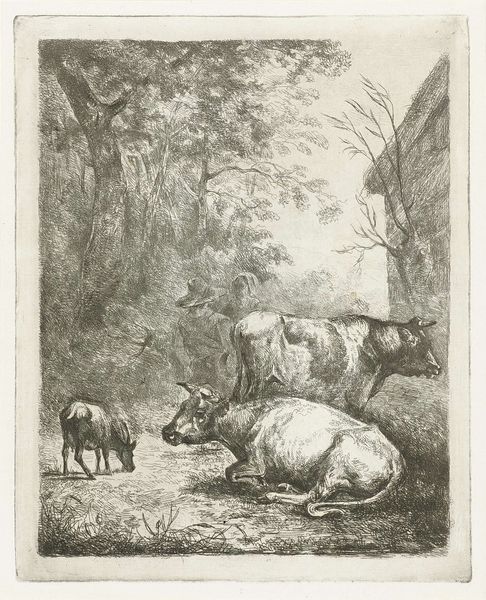
drawing, ink, chalk
#
drawing
#
landscape
#
ink
#
chalk
#
15_18th-century
#
genre-painting
Copyright: Public Domain
Johann Georg Wagner made this drawing of a resting herder and cow with pen and gray ink, probably in the late 18th century. It evokes a world of rural simplicity, far from the concerns of urban life. The image uses visual codes of pastoral idealism that were fashionable at the time. Across Europe, elites were constructing idealized visions of country life, even as their wealth depended on agricultural labor. Wagner would have known about this. He made many drawings for the Duke of Zweibrücken. The image idealizes the social structure of its own time. It is self-consciously conservative, proposing a comforting vision of hierarchy. It is not critiquing the institutions of art. Its display in a museum today, of course, gives it another layer of institutional meaning. Understanding the social function of such imagery requires an understanding of the complex socio-economic context of its time. Further research into the archives of the Zweibrücken court would help to illuminate the networks of patronage that sustained Wagner’s practice. It would also reveal the meaning of art as something contingent on social and institutional context.
Comments
No comments
Be the first to comment and join the conversation on the ultimate creative platform.
